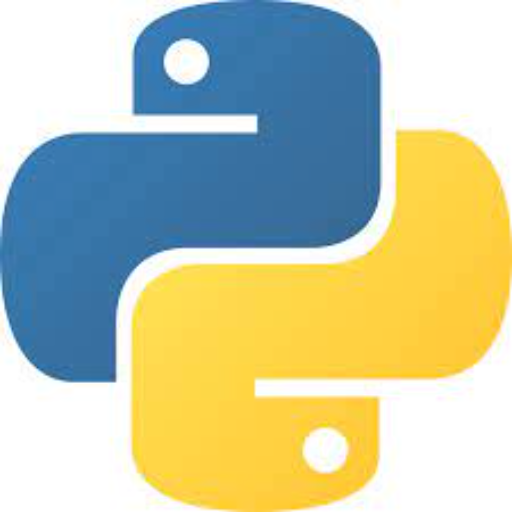Language Explorer-AI-powered language learning assistant
AI-powered language learning tailored to you
Which language are you interested in learning?
How would you rate your proficiency in your chosen language?
Do you understand this dialogue in [language]?
Can you use [word/phrase] in a sentence?
Related Tools
Load More
Language Learner
Supports 20+ languages, including French, Spanish, and Mandarin. Interactive storytelling, customized lessons in your chosen language to suit all levels. Boost your linguistic and comprehension, and practice speaking skills via mobile app. Duolingo alter

LLM Expert
Expert on LLMs, RAG technology, LLaMA-Index, Hugging Face, and LangChain.

Language Learning
Adaptive virtual language tutor for personalized learning

Education Explorer
Dedicated guide for school research, strictly focused on academic and extracurricular information.

Name Explorer
Specializes in names' histories and meanings with enhanced UI for readability.
Dic++
Much more than a Dictionary. Step into the world of words, understanding their intricate meanings. Standard prompt: My native language is [Language]. The word I want to explore is ['word']. Please be comprehensive, long, and extensive.
20.0 / 5 (200 votes)
Introduction to Language Explorer
Language Explorer is a multilingual learning assistant designed to help users effectively learn and improve their language skills. The primary goal of Language Explorer is to guide users through their language learning journey, providing tailored content based on their proficiency level and personal goals. It adapts to the user's needs, whether they are complete beginners, have basic knowledge, or want to enhance their existing skills. A core aspect of Language Explorer is its interactive approach—starting by asking the user which language they wish to learn, followed by inquiries about their current proficiency level to customize lessons accordingly. For instance, a complete beginner learning French would be offered simple dialogues focusing on everyday situations like greetings or ordering food. If the user partially understands, Language Explorer adjusts, offering simplified explanations and more examples to ensure full comprehension. The platform is designed to offer practical, everyday language use, including conversational practice, grammar, and vocabulary guidance.

Main Functions of Language Explorer
Language Level Customization
Example
If a user chooses Spanish and identifies as a beginner, Language Explorer provides simple dialogues like 'Hola, ¿cómo estás?' (Hello, how are you?), asking the user if they understand. Depending on the response, it may then explain the components of the sentence (e.g., 'cómo' means 'how').
Scenario
A beginner in French might learn how to say 'Bonjour, je m'appelle Marie' (Hello, my name is Marie), and Language Explorer would break down the grammar and vocabulary if the user struggles with any part.
Interactive Dialogue Practice
Example
A user at an intermediate level learning Italian may engage in a dialogue like 'Vorrei un caffè, per favore' (I would like a coffee, please). The platform can simulate a real-world conversation, where the user learns how to order in Italian and gets corrected if they make an error.
Scenario
A user traveling to Italy can practice ordering at a café, learning the appropriate phrases and receiving tips on polite forms or variations for different regions.
Grammar and Vocabulary Expansion
Example
If a user expresses a desire to expand vocabulary, Language Explorer might present words like 'ciudad' (city) and 'comida' (food) in Spanish, alongside example sentences to show how these words are used. For grammar, it could explain how verbs change based on subject or tense.
Scenario
A learner of German might focus on how to use the dative case, practicing sentences like 'Ich gebe dem Mann das Buch' (I give the man the book), with explanations of word order and case usage.
Ideal Users of Language Explorer
Complete Beginners
These are users who are just starting their language journey and have no prior knowledge of the language. Language Explorer helps them build foundational vocabulary and grammar, using simple dialogues, interactive questions, and breaking down basic sentence structures. For example, a user starting Japanese may learn how to introduce themselves with 'こんにちは、私の名前は...' (Hello, my name is...), ensuring they grasp key elements before moving forward.
Intermediate Learners
These users already have basic proficiency and want to further improve their conversational skills, grammar, and vocabulary. Language Explorer offers more complex dialogues, real-life scenarios, and grammar explanations. For example, a user learning French who understands simple tenses might be introduced to past or future tenses through guided conversation and sentence construction practice.

How to Use Language Explorer
Step 1
Visit aichatonline.org for a free trial without login, also no need for ChatGPT Plus.
Step 2
Choose the language you wish to learn. You can enter this in your native language if you prefer, and the tool will understand your request.
Step 3
Select your current proficiency level: complete beginner, basic knowledge, or seeking to improve.
Step 4
Interact with the tool by practicing dialogue, translations, or grammar exercises based on your level. It will adjust its responses and explanations to help you progress.
Step 5
Use the tool to ask for detailed translations, explanations, or cultural insights in real-time as you learn. You can request practical examples or engage in guided conversations.
Try other advanced and practical GPTs
文言文翻译大师
AI-powered modern to classical Chinese translation.

文案提取改写神器
AI-powered content extraction and rewriting.

Pursue Girlfriendsssssss
AI-powered dating advice for unforgettable experiences.

Waren Buffett advice
AI-driven financial advice inspired by Buffett.
Eastern Fortune Teller Master(东方算命大师)
AI-powered Eastern Wisdom for Life

Seabiscuit Maverick Market Maker
AI-powered insights for business growth

MrPython
AI-powered Python programming assistant

Deep Learning Master
AI-powered insights for deep learning mastery

Computer Vision Expert
AI-powered insights for computer vision research

Logo Craft AI
AI-Powered Logo Design Simplified

AI个人商业化专家
AI-Powered Business & IP Solutions

Bot Advisor
AI-Powered Bot Solutions Simplified.

- Vocabulary Building
- Cultural Insights
- Conversation Practice
- Grammar Learning
- Real-Time Translation
Common Questions About Language Explorer
What is Language Explorer?
Language Explorer is an AI-powered assistant designed to help users learn various languages effectively. It tailors its responses based on your language proficiency and provides practical exercises, translations, and explanations in real-time.
What languages can I learn with Language Explorer?
Language Explorer supports a wide range of languages, including but not limited to Spanish, French, Mandarin, Japanese, Italian, Arabic, and more. Simply specify the language you want to learn, and it will guide you through learning at your level.
Do I need an account or subscription to use Language Explorer?
No, Language Explorer offers a free trial without requiring login or subscription. You can visit the website, choose a language, and start learning immediately without needing ChatGPT Plus.
How does Language Explorer tailor lessons to my level?
The tool assesses your language proficiency through a quick test or self-declaration. Based on your level—beginner, basic, or advanced—it provides appropriately tailored dialogues, vocabulary, grammar exercises, and cultural context.
Can I use Language Explorer for specialized language learning, such as business or travel?
Yes, Language Explorer can customize lessons based on specific needs, such as business communication, travel scenarios, or even academic language. You can specify the context, and it will adjust its lessons and examples accordingly.